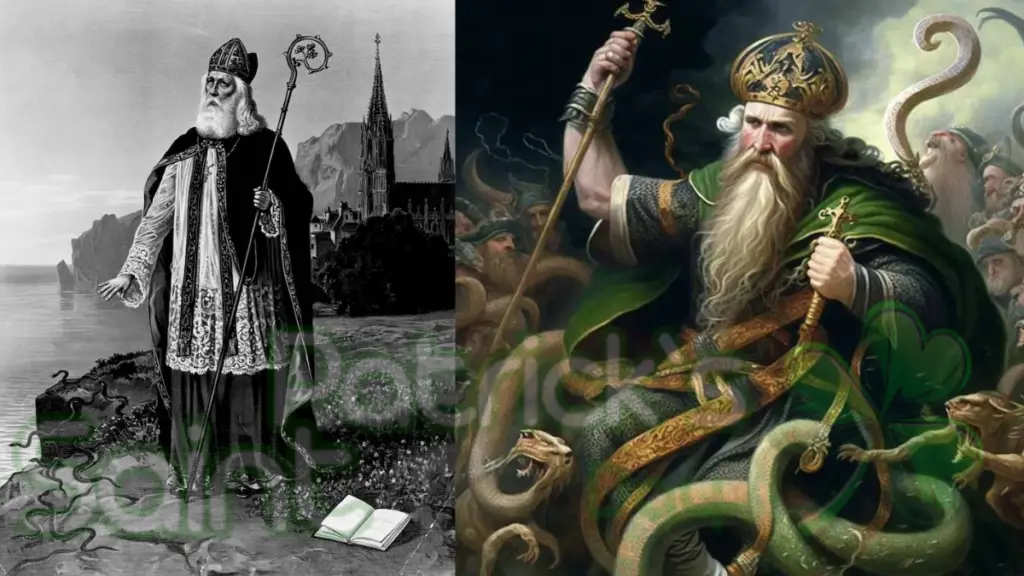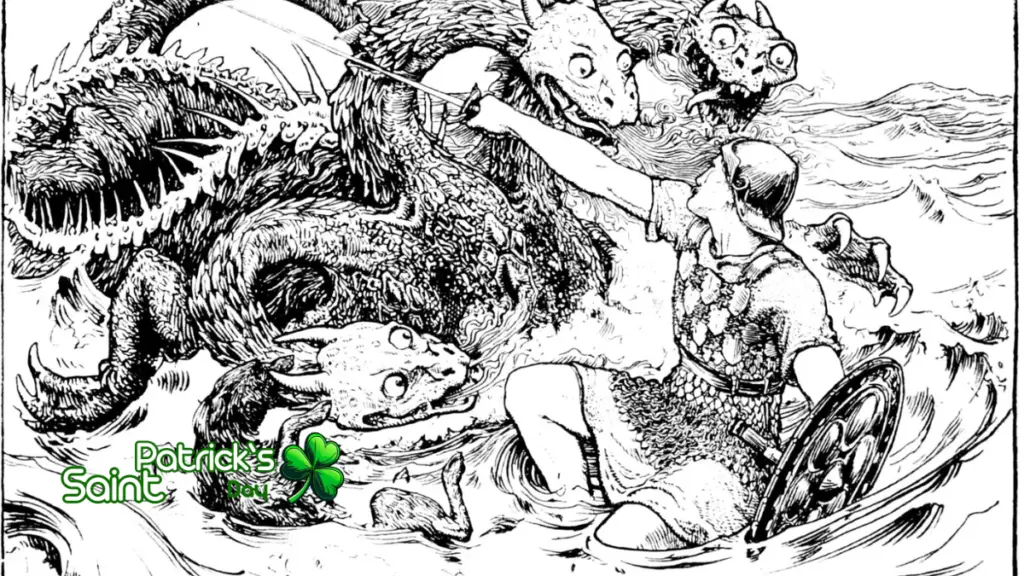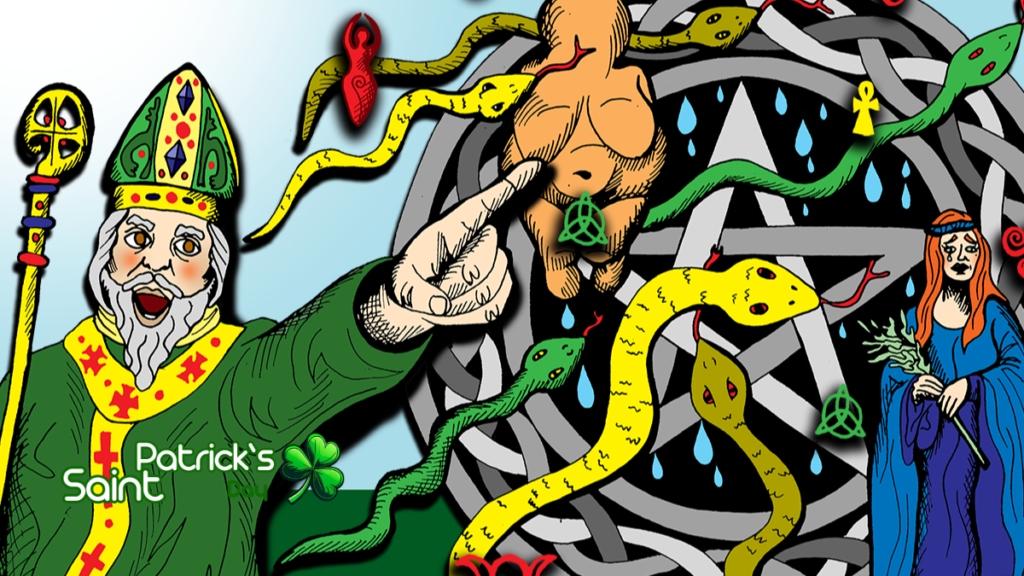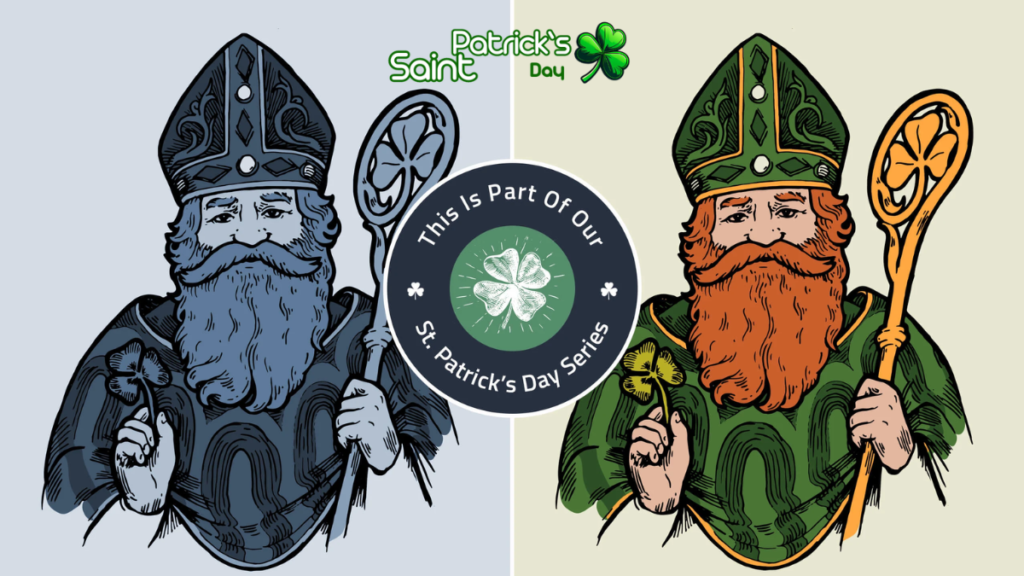St. Patrick, the patron saint of Ireland, is a figure shrouded in a mix of history and legend. One of the most enduring legends associated with St. Patrick is that he drove all the snakes out of Ireland.
This post aims to delve into this fascinating tale, exploring its origins, its impact on Irish culture, and the truth behind the legend.
The Legend of St. Patrick and the Snakes
According to legend, St. Patrick drove all the snakes out of Ireland during a 40-day fast he undertook on top of a hill.
The story goes that he chased them into the sea after they attacked him during his fast. Since then, Ireland has been known as a land free of snakes.

The Truth Behind the Legend
While the legend of St. Patrick driving out snakes is widely known, it’s important to note that, scientifically, Ireland has never been home to snakes.
The Ice Age kept the island too cold for reptiles, and the surrounding seas have since kept snakes from slithering over. Therefore, the tale is more likely a metaphor than a literal account of St. Patrick banishing snakes.
The Symbolism of Snakes in St. Patrick’s Story
In many cultures, snakes are seen as symbols of evil or sin. In the context of St. Patrick’s story, the snakes could symbolize the pagan practices that were prevalent in Ireland before his arrival.
By driving out the snakes, St. Patrick could be seen as driving out paganism and bringing Christianity to Ireland.

St. Patrick’s Day and Snakes
The legend of St. Patrick and the snakes is often brought up during St. Patrick’s Day celebrations.
Parades and festivities might feature images of St. Patrick driving out snakes, symbolizing the triumph of good over evil.
Who was St. Patrick?
St. Patrick, born in the late 4th century, was a Romano-British Christian missionary and bishop in Ireland. Known as the “Apostle of Ireland”, he is one of the primary patron saints of Ireland.
Despite being captured by Irish pirates at the age of 16 and enslaved for six years, he later returned to Ireland as a missionary, spreading Christianity across the country.
The Role of St. Patrick in Christianity
St. Patrick’s contributions to Christianity are significant. He is credited with converting the people of Ireland to Christianity and establishing monasteries, churches, and schools.
His teachings have left a lasting impact on Christian theology and practices.
The Legend in Modern Times
In today’s world, the legend of St. Patrick and the snakes continues to captivate. It serves as a reminder of Ireland’s rich cultural history and religious heritage.
While we now know that the story isn’t literally true, its symbolic meaning continues to resonate.

The Impact of the Legend on Irish Culture
The legend of St. Patrick and the snakes is deeply woven into the fabric of Irish culture.
It’s not just a story told around the time of St. Patrick’s Day, but a narrative that has shaped the identity of the Irish people and their worldview.
Cultural Identity
The story of St. Patrick driving out the snakes has become a symbol of Irish identity.
It represents the triumph of a humble man over adversity, a theme that resonates with the historical struggles of the Irish people.
The legend, in many ways, mirrors the resilience and determination that are characteristic of the Irish spirit.
Religious Significance
The legend also holds significant religious importance in Ireland. St. Patrick is revered as the patron saint who brought Christianity to the Irish shores.
The story of him driving out the snakes symbolizes the eradication of pagan beliefs and the advent of Christian faith.
This transformation is a key aspect of Ireland’s religious history and continues to influence its Christian practices.
Influence on Art and Literature
The legend has also left its mark on Irish art and literature. From ancient carvings and medieval manuscripts to modern paintings and literary works, the imagery of St. Patrick banishing the snakes has been a recurring theme.
It serves as a source of inspiration, reflecting the nation’s religious, cultural, and historical journey.
Role in Festivities
St. Patrick’s Day, celebrated on March 17th every year, is a testament to the enduring popularity of the legend.
The festivities are replete with references to the story, with parades often featuring depictions of St. Patrick and the snakes.
It’s a day when the legend comes alive, not just in Ireland, but in every corner of the world where the Irish diaspora has made its home.

Conclusion
The tale of St. Patrick and the snakes is more than just a fascinating legend. It’s a symbol of faith, transformation, and the power of good over evil. As we delve into the story, we uncover layers of meaning that go beyond the literal interpretation.
The legend represents the triumph of Christianity over paganism in Ireland, a significant turning point in the country’s history. St. Patrick, through his missionary work, brought about a spiritual transformation that still resonates in the Irish society today.
Moreover, the story underscores the values of resilience and determination. St. Patrick, despite being enslaved in his youth, returned to the land of his captors to spread his faith. His life serves as an inspiration, reminding us of the strength of the human spirit in the face of adversity.
As we celebrate St. Patrick’s Day and remember the story of the snakes, we also celebrate the enduring legacy of St. Patrick and the values he represents.
Related Posts
- The Mystery: The Death of Saint Patrick
- 30+ Facts About Saint Patrick’s Day And Interesting Information
- What Did St Patrick Do?
- Is Saint Patrick’s Day a Pagan Holiday?
FAQ’s
St. Patrick was a Romano-British Christian missionary and bishop in Ireland. Known as the “Apostle of Ireland”, he is one of the primary patron saints of Ireland.
According to legend, St. Patrick drove all the snakes out of Ireland during a 40-day fast he undertook on top of a hill.
Scientifically, Ireland has never been home to snakes. The Ice Age kept the island too cold for reptiles, and the surrounding seas have since kept snakes from slithering over. Therefore, the tale is more likely a metaphor than a literal account of St. Patrick banishing snakes.
In many cultures, snakes are seen as symbols of evil or sin. In the context of St. Patrick’s story, the snakes could symbolize the pagan practices that were prevalent in Ireland before his arrival.
The legend of St. Patrick and the snakes has had a profound impact on Irish culture. It has become an integral part of the Irish identity, symbolizing the transition from paganism to Christianity.
St. Patrick is credited with converting the people of Ireland to Christianity and establishing monasteries, churches, and schools. His teachings have left a lasting impact on Christian theology and practices.
In today’s world, the legend of St. Patrick and the snakes continues to captivate. It serves as a reminder of Ireland’s rich cultural history and religious heritage.
About us
Saint Patricks Day
Saint Patricks Day is your go-to guide for everything related to this significant Irish celebration. We strive to provide detailed and accurate information about the history, traditions, and unique celebrations of Saint Patrick’s Day. Visit our About us for more information.

